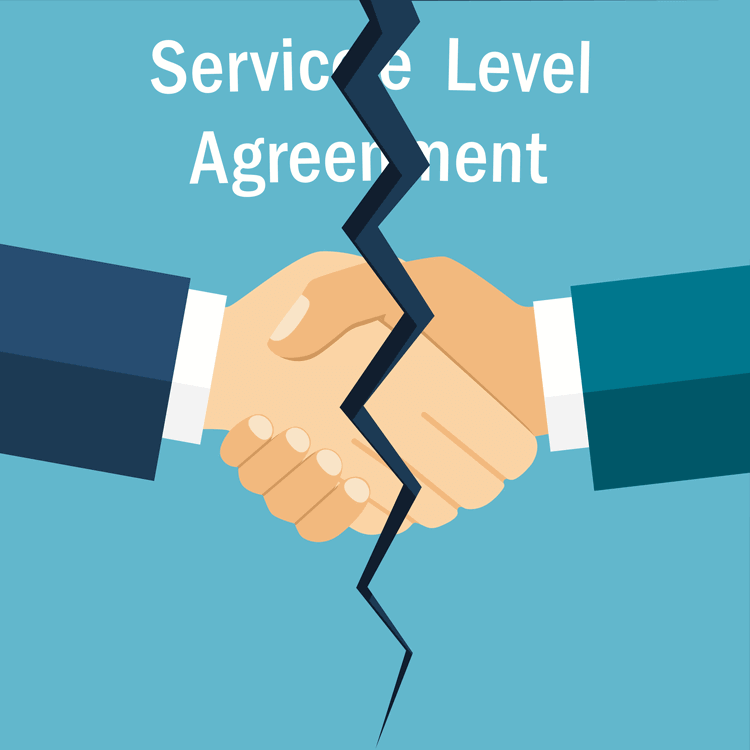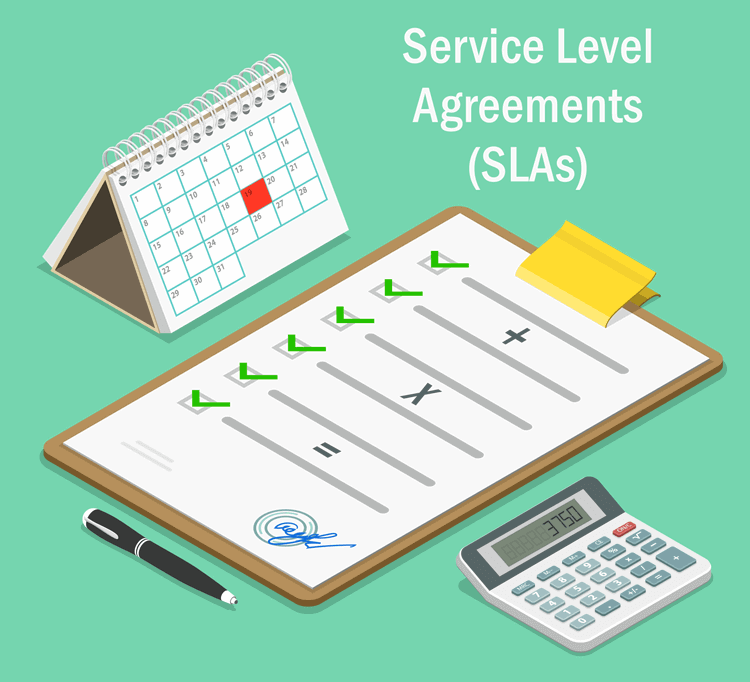Managing an SLA Breach: A Guide to Resolution and Prevention
Service Level Agreements (SLAs) document expectations between service providers and customers. These contracts outline standards for response and up time, and business operating hours, among others.
However, even the most well-crafted SLAs are susceptible to breaches. An SLA breach occurs when the agreed-upon services fall short of stipulated standards. It erodes trust and can result in financial penalties and damaged reputations.

Managing SLA breaches effectively is crucial for maintaining a healthy, long-term business relationships. In this guide, we will explore how to resolve and prevent SLA breaches, helping both parties continue to benefit from the arrangement.
What is an SLA Breach?
An SLA breach occurs when the service provided fails to meet the standards and targets outlined in the Service Level Agreement. These instances are also referred to as SLA violations. They can range from delayed response times to inadequate quality of service. Such violations can result in financial penalties, eroded trust, and a damaged business reputation.
How to Resolve an SLA Breach
- Immediate Acknowledgment: The first step in resolving an SLA breach is acknowledging it promptly. This sets the stage for transparent communication and shows the client that you're committed to fixing the issue.
- Investigate the Cause: Identify the root cause of the SLA violation to prevent similar breaches in the future. Whether it's a technical glitch or a human error, understanding the reason is crucial for effective resolution.
- Communicate Transparently: Keeping the client in the loop is essential. Clearly explain the nature of the SLA violation and what steps are being taken to resolve it. Also, identify an escalation path if needed, and how it will be prevented in the future. Proactive, automatic notifications can improve the customer experience and allow support resources to expedite a resolution.
- Execute a Remediation Plan: Once the issue has been identified, act swiftly to implement a remedial plan. This could range from deploying a technical fix to adjusting service protocols, but it must be done quickly to minimize impact.
- Review SLA Terms: Post-incident, review the terms of your SLA to see if adjustments are needed. The SLA violation may have exposed gaps or ambiguities that should be clarified.
- Compensate the Client: If your SLA includes clauses for compensation in the event of a breach, make sure to honor them. This can go a long way in rebuilding trust after an SLA violation.
- Document and Learn: Keep detailed records of the incident, from acknowledgment to resolution. This documentation can serve as a learning tool for preventing similar SLA breaches in the future.
By taking these steps, you can turn an SLA violation into an opportunity for improvement, ultimately strengthening the relationship with your client.
How to Prevent an SLA Breach in the First Place
- Regular Monitoring: Implement automated monitoring tools that alert your team whenever Key Performance Indicators (KPIs) based on SLA metrics (e.g., server uptime or response time) start to deviate from the agreed-upon thresholds and internal goals. By catching these issues early, you can take corrective action before a missed SLA occurs.
-
Clear Communication Channels: Assign a dedicated point person or team to liaise with the client.
For example, a Customer Success Manager can hold regular check-ins to clarify any ambiguities in the SLA and make sure everyone is on the same page.
-
Use Advanced Tools: Use IT service management solutions for real-time insights and alerts on service levels.
For example, Giva's IT Service Management system is an effective ITSM ticketing tool that helps IT organizations manage, track, and resolve service requests, incidents, and problems efficiently. It's the best for maintaining service levels, effectively managing resources, and ensuring compliance, making it a go-to solution for monitoring software and keeping service levels in check. Discover how Giva's IT Service Management system can help you by starting a 30-day free trial.
-
Internal Alignment: Ensure key internal stakeholders understand SLA requirements and the consequences of a missed SLA.
For example, educate your customer service support team members about the SLA's response time commitments so that they can prioritize accordingly.
-
Select the Appropriate Service Tier: Choose a service plan that aligns closely with your needs and risk tolerance.
For example, if high uptime is critical for your business, consider choosing a more stringent service level even if it comes at a higher cost.
-
Develop a Contingency Plan: Create a contingency plan to be ready for unforeseen events.
For example, if you depend on a third-party email service, have a secondary email service in place to use in case of an SLA breach.
The Bottom Line: Managing and Avoiding SLA Breaches
Service Level Agreements (SLAs) are crucial in identifying service provider standards and customer expectations. These agreements provide a structured framework and establish service quality benchmarks. However, an SLA breach can erode trust and potentially leading to financial repercussions and damaged reputations.
Managing SLA breaches helps maintain resilient relationships between service providers and clients. Advanced tools like Giva's IT Service Management software allow organizations to proactively monitor and maintain service levels, helping prevent SLA breaches.
It is imperative for both service providers and clients to meticulously uphold the stipulations of the SLA meticulously, addressing any discrepancies swiftly and efficiently. Regular dialogue, accountability, and the adept use of technology are fundamental in maintaining the integrity of the SLA and ensuring mutual benefit.
Try Giva today to streamline your customer support and SLA management.





